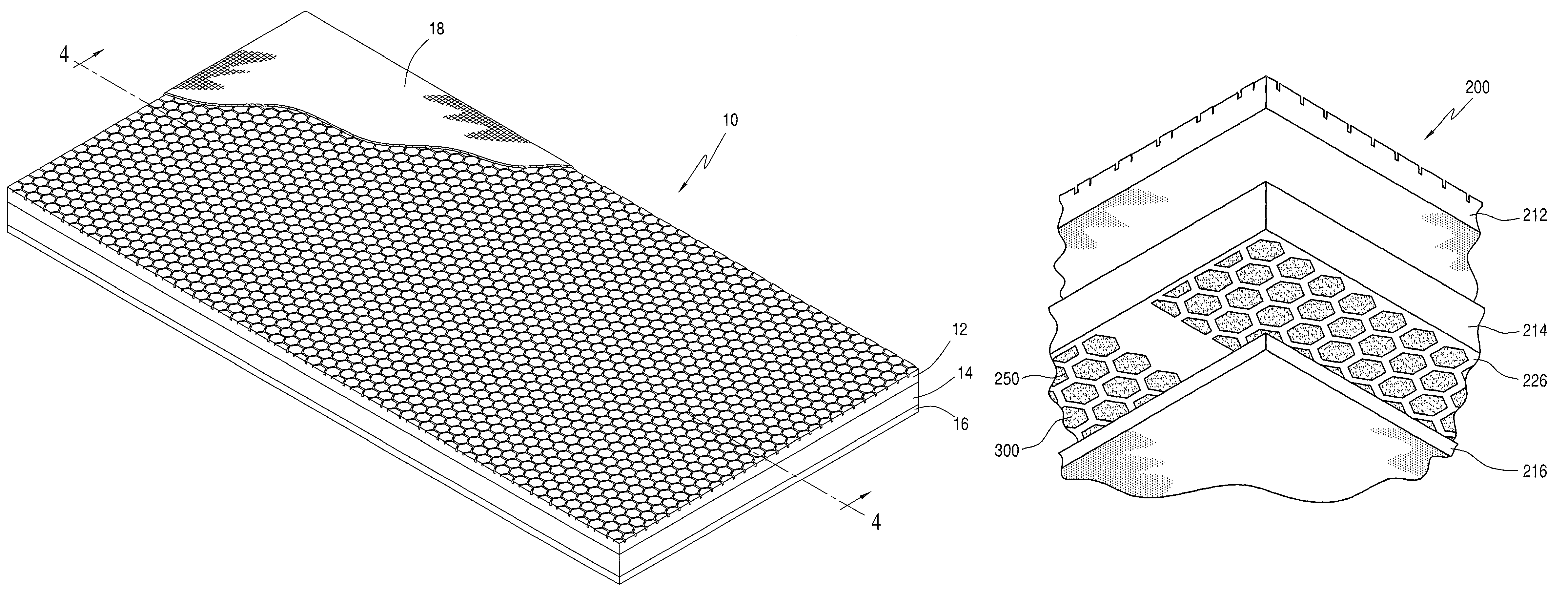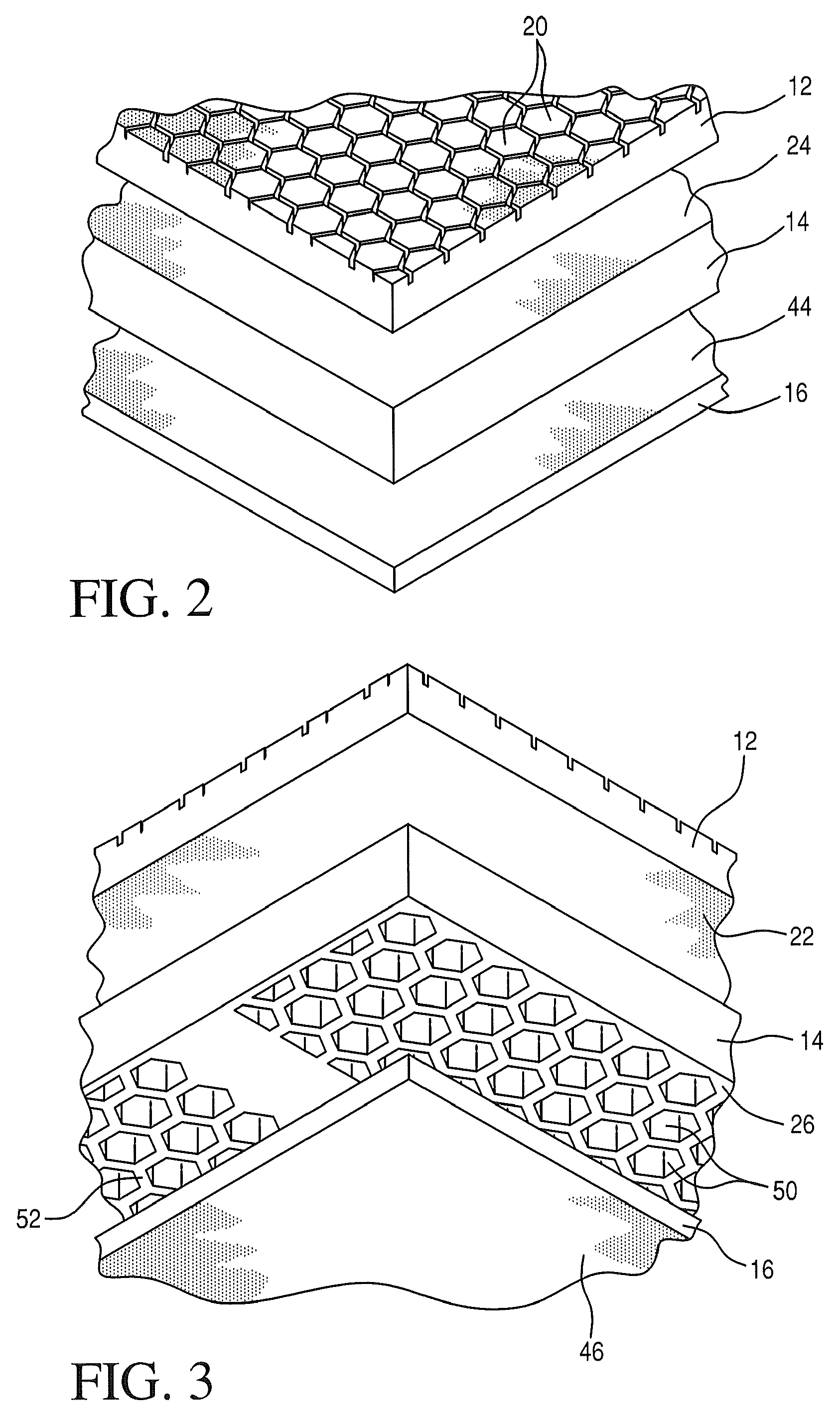Mattress adapted for supporting heavy weight persons
a mattress and mattress technology, applied in the field of medical mattresses, can solve the problems of frequent body movement or adjustment, poor night's sleep, excessive sag or bottoming of mattresses,
- Summary
- Abstract
- Description
- Claims
- Application Information
AI Technical Summary
Benefits of technology
Problems solved by technology
Method used
Image
Examples
first embodiment
[0040]The top layer 12 of this first embodiment comprises a viscoelastic foam. Representative viscoelastic foams include foams with glass transition temperatures above −20 C and with ball rebound values of less than approximately 20%. The viscoelastic foam of the top layer 12 may have a density in the range of 1.5 pcf to 10.0 pcf, more particularly 3.0 pcf to 6.0 pcf.
[0041]Viscoelastic or slow-recovery foams frequently have lower air permeabilities, which leads to increased heat build-up when such foams are used in mattress constructions. Higher skin temperatures may accelerate pressure ulcer formation. In one embodiment, the viscoelastic foam used for the top layer 12 is an open cell foam with an air permeability of at least about 60 ft3 / ft2 / min, preferably at least about 100 ft3 / ft2 / min. Foams with such air permeability help to maintain a reclining person's skin temperature closer to normal body temperatures, e.g., 96-100° F.
[0042]The top surface of the top layer 12 preferably has...
third embodiment
[0071]Referring to FIG. 9, a mattress construction 200 of a third embodiment has a top layer 212, a core or middle layer 214, and a bottom layer 216. The three layers 212, 214, 216 form in combination the sleeping mattress 200.
[0072]The bottom surface 226 of the core layer 214 is generally flat or substantially planar. As shown in FIGS. 9 and 10, the bottom surface 226 has regions from which foam material has been extracted to form multiple cavities 250 separated by upstanding sidewalls 252. The foam material has not been cut away at the upstanding sidewalls 252. The cavities 250 extend to a depth within the thickness of the core layer 214 and terminate in cavity bases 254. The core layer 214 may be provided with a desired thickness. Particularly, if the core layer 214 has a thickness of about 3 inches, the cavities 250 extend to depths of from about 0.25 to 2.6 inches. The cavities in a region may have the same or different depths. Alternatively, the cavities in one region may have...
PUM
 Login to View More
Login to View More Abstract
Description
Claims
Application Information
 Login to View More
Login to View More - R&D
- Intellectual Property
- Life Sciences
- Materials
- Tech Scout
- Unparalleled Data Quality
- Higher Quality Content
- 60% Fewer Hallucinations
Browse by: Latest US Patents, China's latest patents, Technical Efficacy Thesaurus, Application Domain, Technology Topic, Popular Technical Reports.
© 2025 PatSnap. All rights reserved.Legal|Privacy policy|Modern Slavery Act Transparency Statement|Sitemap|About US| Contact US: help@patsnap.com



